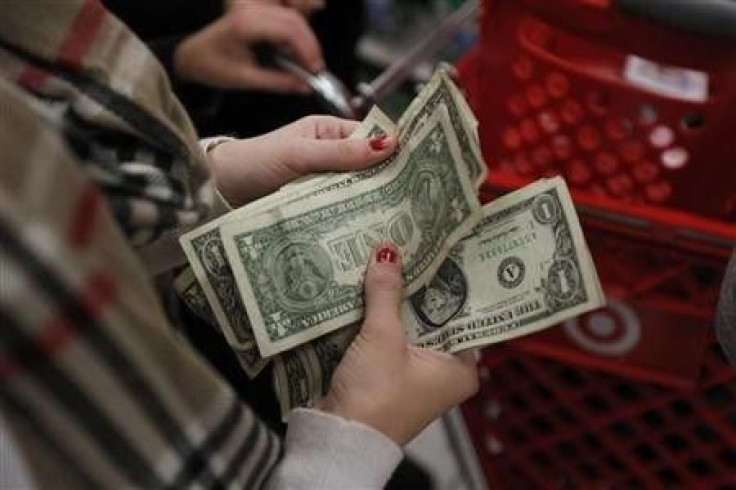US Payroll Tax Hike Likely Hit January Incomes Hard; Consumers Tap Savings To Boost Spending

Americans saw their paychecks shrink in January. The reason: A temporary cut in Social Security withholdings expired at the end of last year, which pushed payroll taxes back to 6.2 percent from 4.2 percent.
The expiration of the payroll tax cut, according to Capital Economics chief U.S. economist Paul Ashworth, likley contributed to what could be a 3.5 percent month-over-month slump in personal disposable income in January.
“We expect any decline in real consumption to be pretty modest, however, with households absorbing the loss of income by lowering their saving rather than spending,” Ashworth said in a note to clients.
Nevertheless, for the first quarter of 2013 as a whole, real consumption growth is likely to be only 1 percent annualized, with gross domestic product growth a little stronger at 2 percent, he added.
One of the most common tools used by policymakers over the past half-century to revive sluggish demand during recessions has been cutting taxes. This usually takes the form of either a tax rebate, or a reduction in tax rates.
Policymakers rely on households to spend these extra funds in the short term to boost aggregate spending and help bump the economy out of a recession.
In a new study, economists at the Federal Reserve Bank of New York found that lowering the withholding rate (the method used in the Obama administration’s 2011 and 2012 payroll-tax cuts) led workers to spend a bigger chunk of their extra income -- and to spend more overall -- than they intended to.
The economists, Grant Graziani, Wilbert van der Klaauw and Basit Zafar, surveyed workers in early 2011 and then in December 2011 to gauge the effects of the two-percentage-point payroll tax cut, which put an additional $1,000 a year in the pocket of the average household earning $50,000 annually. It affected nearly 155 million workers, who saw a total increase of $112 billion in their 2011 paychecks. The provision was not renewed in the fiscal cliff deal.
The Fed researchers found that while workers on average said they planned on spending only about 14 percent of the additional cash, they reported months later they actually had spent 36 percent -- more than twice as much.
The expiration of the payroll tax cut, coupled with the impact of a likely drop back in dividend payments in January, means that last month probably saw a sharp drop in U.S. personal income.
December’s 2.6 percent jump in personal incomes -- the largest monthly gain since December 2004 -- revealed a massive spike in special dividend payments at the end of last year as firms brought forward payouts scheduled for 2013 because of the risk that dividend taxation rates could rise sharply at the start of this year.
The nearly $400 billion annualized spike was bigger than Microsoft Corp.’s (NASDAQ:MSFT) special one-off payment back in late 2004.
Accelerated bonus payments, made ahead of the increase in marginal tax rates for high-income earners, probably added another $15 billion annualized to December's incomes.
Americans decided to stash away most of the extra income as the savings rate jumped to 6.5 percent -- its highest since May 2009.
January’s consumption level likely remained unchanged, as consumers dipped into their savings to boost spending.
“The upshot is that the savings rate could drop from 6.5 percent to as low as 3.5 percent" in January, Ashworth said.
From what we already know, the U.S. auto industry showed surprising strength in January. Overall, the industry sold more than 1 million vehicles last month, a 14.2 percent gain over the same month a year earlier, according to Autodata Corp.
All three domestic manufacturers -- General Motors Co. (NYSE:GM), Ford Motor Co. (NYSE:F) and Chrysler Group -- reported double-digit gains. Toyota Motor Corp. (TYO:7203) and Honda Motor Co. Ltd (TYO:7267), the two biggest Japanese brands, also posted strong sales.
In a new analysis released on Tuesday, the Congressional Budget Office projected that the U.S. economy will grow just 1.4 percent this year if $85 billion in across-the-board spending cuts take effect as scheduled on March 1.
The unemployment rate, now 7.9 percent, is projected to stay above 7.5 percent through next year. That would be the sixth straight year above that level, the longest period of such high unemployment in 70 years, the report said.
© Copyright IBTimes 2024. All rights reserved.












